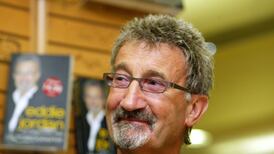Born: May 4th, 1936
Died: April 12th, 2024
Eleanor Coppola, a documentary film-maker and artist who called herself “an observer at heart”, a description borne out through works chronicling the cinematic triumphs and ordeals of her husband, Francis Ford Coppola, and their daughter, Sofia Coppola, has died aged 87.
Coppola’s career as a documentarian began when her husband asked her to record the production of Apocalypse Now, his 1979 exegesis of the Vietnam War that took so long to make that some began calling it Apocalypse Never. By then, he was Hollywood royalty on the strength of his first two Godfather movies. But with Apocalypse Now, he stumbled. He came close to going broke as the movie, its roots in Joseph Conrad’s Heart of Darkness, ran way over budget and over schedule. Filming was slowed by steady rains on location in the Philippines, which served as a stand-in for Vietnam. A typhoon destroyed movie sets. Marlon Brando was overweight and underprepared for his role as a deranged Green Berets colonel. To top it all off, the film’s principal actor, Martin Sheen, had a heart attack during the shooting.
As for the Coppolas, they careened toward divorce, a marital collapse set in motion largely by his sexual infidelities and frequent tantrums on and off the movie set. “My greatest fear,” his wife captured him on tape as saying, “is to make a really pompous film on an important subject, and I am making it.”
She had her own lapses. “If I tell the truth, we both strayed from our marriage, probably equally, each in our way,” she wrote in Notes on the Making of Apocalypse Now, a 1979 account of that period. “Francis has gone to the extremes in the physical world, women, food, possessions, in an effort to feel complete. I have looked for that feeling of completeness in the non‐physical world. Zen, est, Esalen, meditation.”
But the Coppolas, married since 1963, figured out how to stay together. She later managed Rubicon Estate, the winery they owned in Northern California, and designed costumes for the Oberlin Dance Company in San Francisco. Her account of the Philippines experience became the basis for an acclaimed 1991 documentary, Hearts of Darkness: A Filmmaker’s Apocalypse, which she narrated and directed with Fax Bahr and George Hickenlooper.
As an observer of moviemaking, Eleanor Coppola said, she dressed in black, deciding that her presence on the set so attired would be less intrusive. She fretted that her daughter, Sofia, had been miscast in The Godfather Part III as the daughter of mobster Michael Corleone (played by Al Pacino).
After Apocalypse Now, Eleanor Coppola documented other movies by her family, including her husband’s The Rainmaker (1997), base on a novel by John Grisham, and their daughter Sofia’s The Virgin Suicides (1999) and Marie Antoinette (2006).
“I may hold the world’s record for the person who has made the most documentaries about their family directing films,” she said. Her career, she wrote in Notes on a Life (2008), reflected that “I am an observer at heart, who has the impulse to record what I see around me.”
Late in life, she tried her hand at directing cinematic fiction, with decidedly mixed results. Her Paris Can Wait, released in 2017, when she was 81, was dismissed by critics. Coppola’s Love Is Love Is Love fared only slightly better in 2021.
A source of enduring heartache for her was the death of her son Gian-Carlo Coppola in 1986 at 22, the oldest of her three children. He was in a speedboat steered by Griffin O’Neal (a son of actor Ryan O’Neal), who tried to manoeuvre between two slow-moving crafts that turned out to be connected by a towline. Gio, as the Coppola son was called, was knocked back by the towline with such force that he died instantly. (Griffin O’Neal, convicted of negligence, was given a 30-day suspended sentence.)
Her son’s death filled Eleanor Coppola with “unspeakable rage”, she said. She channelled her grief into an art installation called Circle of Memory, which over the years has had several stagings. It consists of a chamber whose walls are straw bales, with salt falling in a stream and children’s voices reciting the alphabet. Visitors are invited to recall children who have died or disappeared. “I feel like there’s a circle of order going on in the universe and a circle of chaos,” she said. “And every once in a while, they intersect.”
Eleanor Jessie Neil was one of three children of Clifford and Delphine (Lougheed) Neil. Her father was a political cartoonist who died when Eleanor was 10.
She met her soon-to-be husband in 1963 on the set of Dementia 13, a Roger Corman horror film that Francis Ford Coppola wrote and directed and on which she served as an assistant art director. After learning that she was pregnant with Gio, they were married that year in Las Vegas. She is survived by her husband; her daughter, Sofia; her son Roman, who is also a film-makers; a brother, William Neil; and several grandchildren. – The New York Times.













